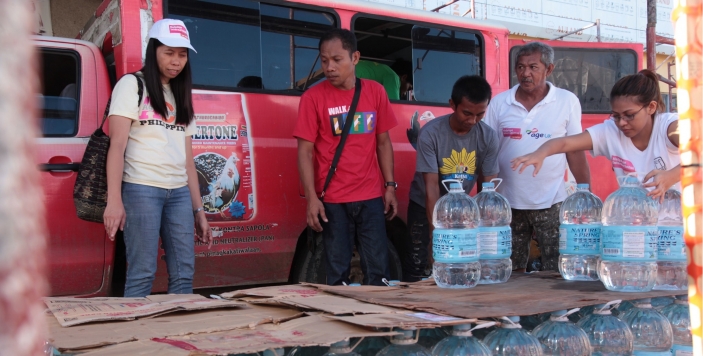
On 8 November 2013, the strongest cyclone to ever have been recorded hit the Philippines, with winds of around 150mph. It caused widespread devastation and destruction, and killed at least 6,300 people.
Typhoon Haiyan, or Typhoon Yolanda as it is known locally, affected 16 million people. Of these, 1.27 million (around 8%) were aged 60 and over. Houses were razed to the ground and livelihoods obliterated. In the aftermath older men and women struggled to find shelter, their health deteriorated, and they had scant money to buy food and supplies.
Over the last two years, HelpAge International has been working with local NGO Coalition of Services for the Elderly (COSE) to provide emergency support to older people affected by Typhoon Haiyan, ensuring their present needs are met but also building their resilience in the event of future disasters.
Here, we reflect on the five key factors that led to the success of our Typhoon Haiyan emergency response.
1. Developing equal partnerships
Through working with our local partner COSE, we were able to integrate our funding network and expertise with their local knowledge and cultural understanding. By collaborating closely on planning and implementation, we ensured high levels of engagement from local governments and older people’s organisations.
2. Involving older people
When developing our programmes in the Philippines, older people were a key resource. We worked with older people’s organisations so that they could lead on or carry out assessments of the situation on the ground, psychosocial support, manning of helpdesks in displaced camps and monitoring project implementation.
3. Building innovative approaches towards a sustainable future
We developed inventive solutions to best respond to older people’s needs:
- Mobile healthcare service: Older men and women in remote areas of the Philippines struggled to access their local health centres in the wake of Typhoon Haiyan due to mobility issues. Instead of leaving these individuals attempting to attempt long and precarious journeys to get medicine or otherwise go without, we organised for nurses on motorcycles to deliver the drugs and provide health check-ups. See the nurses attend to patients in the video below. It is hoped that once this HelpAge programme is finished, the government will ensure its continuity.
- Communal gardens: Typhoon Haiyan had a big impact on community livelihoods. After it struck, many older men and women were left with little or no income. Through older people’s associations, we helped communities develop gardens where people of all ages can come together to grow a diverse array of crops using a combination of modern and traditional techniques. The harvests help to feed families and provide some income.
- Disaster risk reduction: The impact of Typhoon Haiyan on older people made it clear that in the event of another emergency, communities need to be better prepared. Our Build Back Better disaster risk reduction training programme did just that. We worked with local carpenters to train them in rebuild homes in a way that is more resistant to the impact of typhoons. These skilled woodsmen, many of whom are older, are now an invaluable local resource.
4. Collaborating effectively
Our work after Typhoon Haiyan could not have been a success without building constructive relationships and collaborating effectively with other stakeholders in the Philippines, including the government, civil society organisations and the private sector. It ensured a comprehensive, rapid response that was coordinated to reach entire communities. These partnerships have laid the groundwork for responses in the event of future emergencies.
5. Increasing skills at all levels
Throughout our work in the Philippines, we worked to strengthen the skills and capacities at all levels, from the government down to older people and their associations. Practice and training allowed for communities to develop a better understanding of not just the needs of older people in emergencies, but also how their expertise can provide invaluable support in the event of a humanitarian disaster.
Find out more about COSE and our work in the Philippines, and download a PDF version of this blog.
